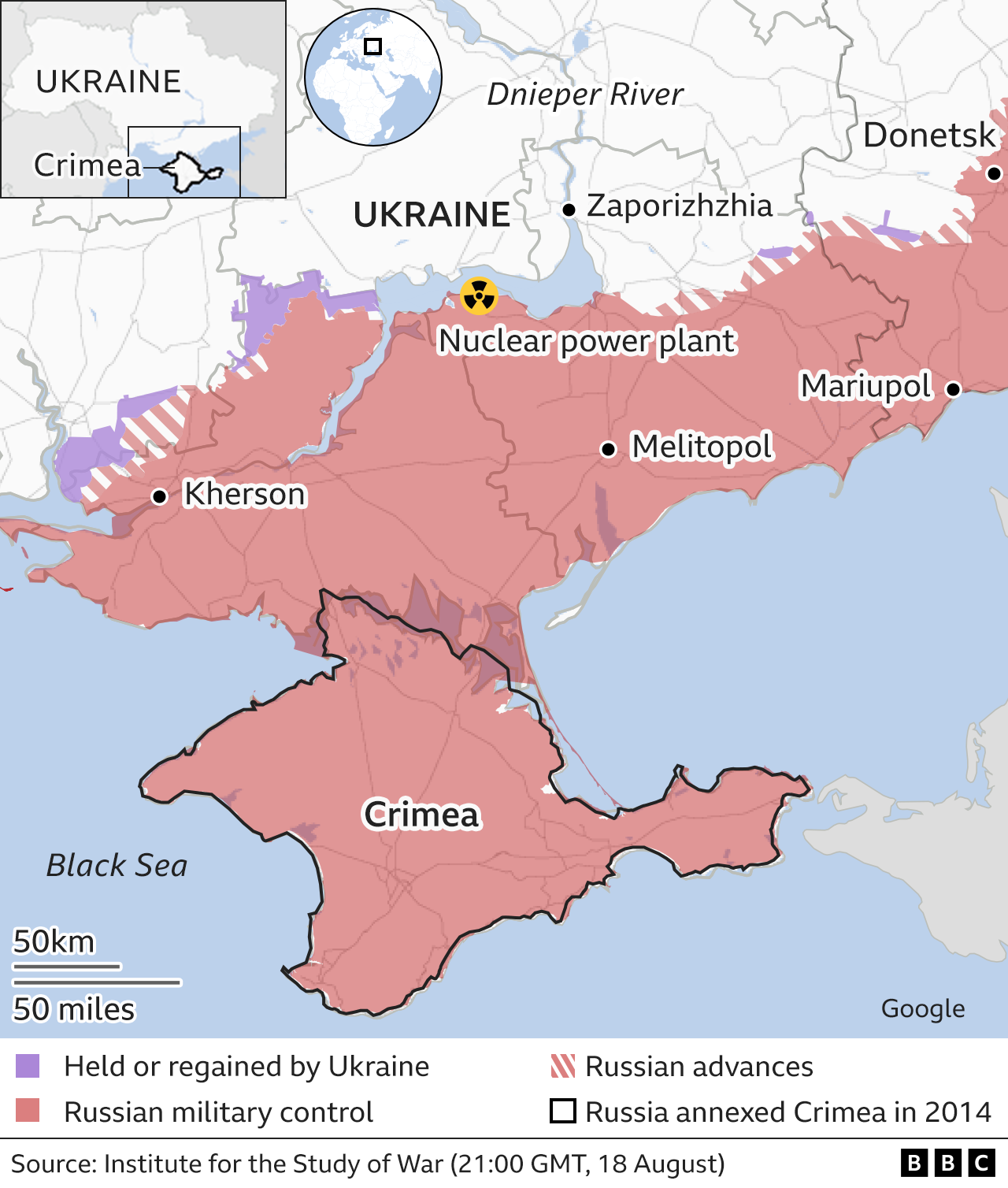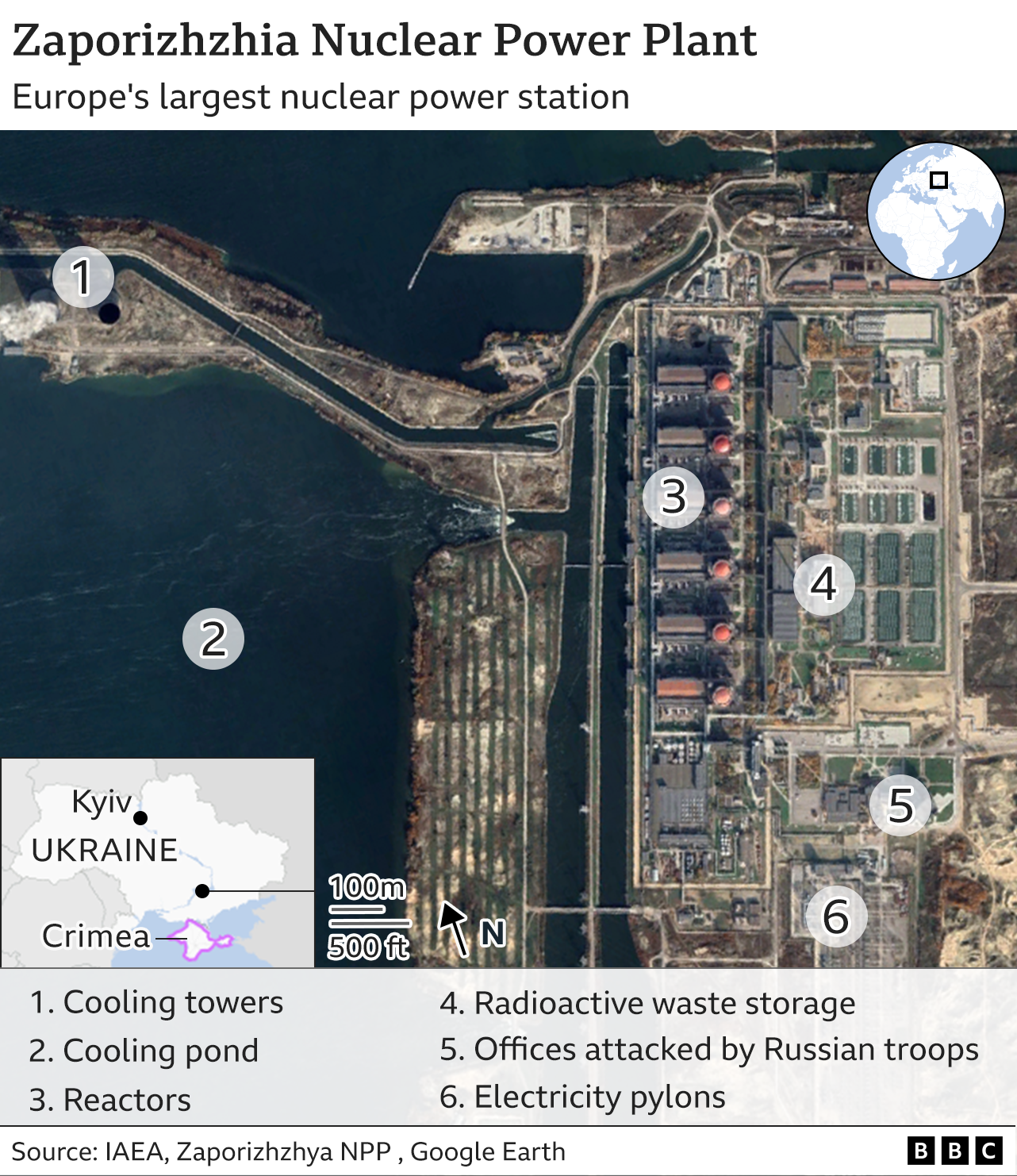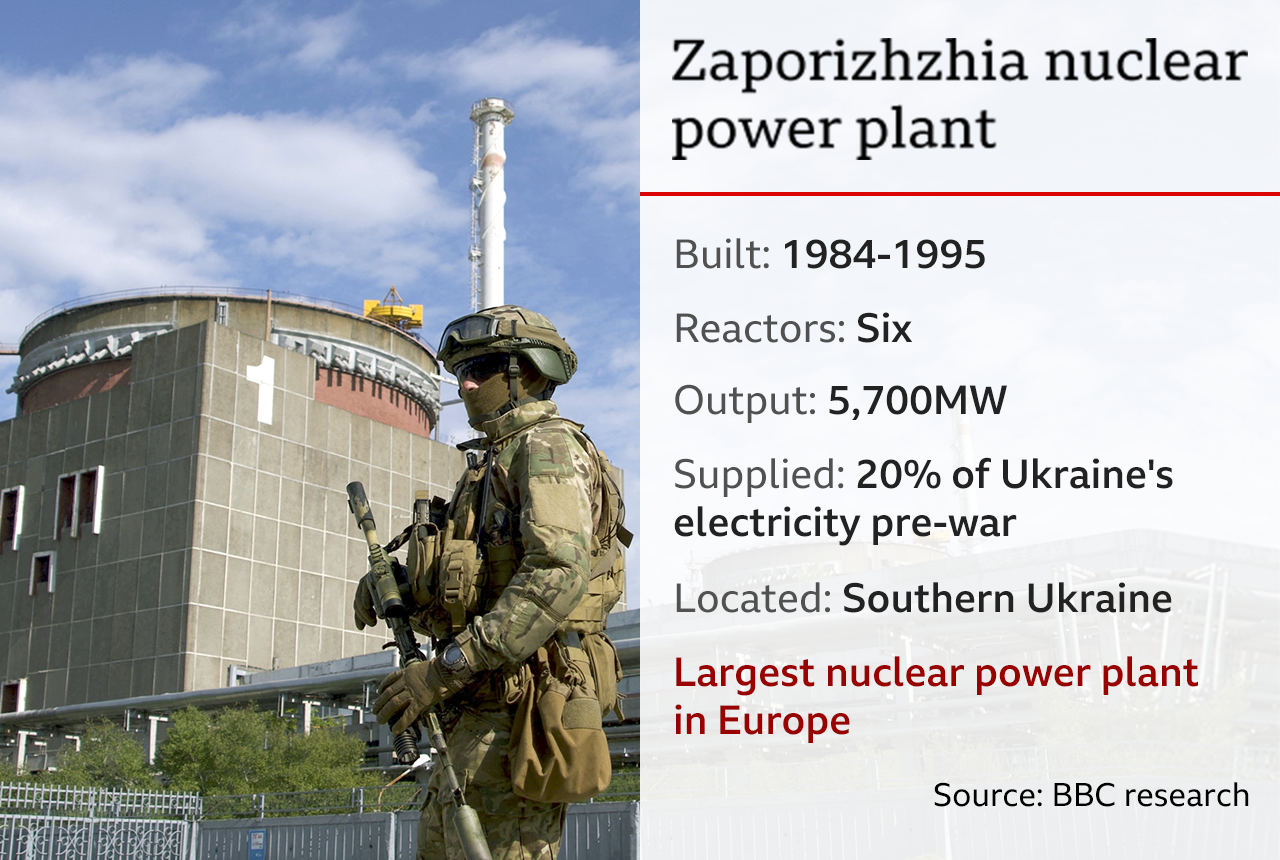The rhetoric surrounding Europe’s biggest nuclear power plant close to the front line in Ukraine is becoming increasingly alarming, with international figures warning of the risk of a major accident.
UN Secretary General António Guterres believes potential damage to the Zaporizhzhia plant could be “suicide” and Turkey’s president has said no-one wants another Chernobyl – the world’s worst nuclear accident when Ukraine was under Soviet rule.
Russia seized the site on the left bank of the River Dnieper at the start of its war but this month the two sides have accused each other of repeatedly shelling it.
Each claims the other is planning a provocation. Ukraine says a Russian film crew has already staged a shelling to blame on Kyiv. Russian defence officials have produced a map showing how a radioactive cloud might spread from the plant from Ukraine to neighbouring countries, including Hungary, Poland and Slovakia.
What, then, is the risk to this nuclear plant which houses six reactors and is Europe facing a Fukushima-type meltdown?
“I wouldn’t be too worried,” says Mark Wenman, head of the Centre for Doctoral Training in Nuclear Energy Futures. “Zaporizhzhia was built in the 1980s, which is relatively modern. It has a solid containment building. It’s 1.75m (5.75ft) thick, of heavily reinforced concrete on a seismic bed, and it takes a hell of a lot to breach that.”

He rejects comparisons with either Chernobyl in 1986 or Fukushima in 2011. Chernobyl had serious design flaws, he explains, while at Fukushima the diesel generators were flooded, which would not happen in Ukraine as the generators are inside the containment building.
Much of the anxiety has been about the plant being hit by artillery shells or rockets. Ukraine has accused Russian forces of using it as a shield from which to fire on nearby cities. Russia denies that is the case. But after 9/11 nuclear plants were tested for potential attacks involving large airliners and found to be largely safe.
The UN’s atomic energy authority, the IAEA, has warned of a “very real risk of nuclear disaster” and asked to be allowed access to the site as soon as possible. The UN secretary general has called on Russia to pull its troops out and demilitarise the area with a “safe perimeter”. Russia has refused, arguing that would make the plant more vulnerable.

“I don’t see any particular risk,” says Prof Iztok Tiselj, chair of nuclear engineering at the University of Ljubljana in Slovenia. He agrees the plant’s design is robust: “I don’t see it as a very probable event that the Russians would intentionally destroy it.”
At the heart of this crisis are the plant’s original Ukrainian staff, working under Russian occupation and quite probably under a great deal of stress. They have complained of the plant coming under continuous attack but warn the real threat of disaster is emerging from Russia’s plan to shut the whole plant down so it can disconnect the supply from Ukraine and reconnect it instead to Russian-occupied Crimea.
Ukraine’s nuclear agency says three of the four power transmission lines linking the plant to Ukraine have already been damaged by rocket fire. If the last source of power is also broken, the agency believes nuclear fuel will begin melting “resulting in a release of radioactive substances to the environment” and diesel generators will not provide a long-term solution.
“A nuclear power plant cannot work into nowhere. It has to provide energy somewhere. If suddenly all of its consumers disappear, the plant is ‘swamped’, the power units switch off in an emergency and a ‘black-out’ begins,” an anonymous engineer from the plant told BBC Russian.


Mark Wenman is full of praise for the staff for shutting down several of the reactors so that only two or three remain operational.
That means that even though the radioactive products continue to be radioactive, the so-called “decay heat” after a shutdown cools exponentially with time. “Provided the diesel generators are in good shape, even if they lost electricity from the grid they should be able to cool the reactor,” he says.
The biggest safety concern could come from spent fuel pools. But even if there were some kind of release of radioactivity, Prof Tiselj believes it would be so small as to be negligible.
The greatest concern is for the welfare of the Ukrainian staff having to manage the plant under occupation.
The head of the IAEA, Rafael Grossi, appealed for them to be left to carry out their duties “without threats or pressure”. Dr Wenman says it is the human factor that represents the biggest risk of a nuclear accident, whether because of chronic fatigue or stress: “And that violates all the safety principles.”
A letter signed by dozens of employees at the plant on Thursday called on the international community to stop and think: “We can professionally control nuclear fission but we are helpless in the face of people’s irresponsibility and madness.”


